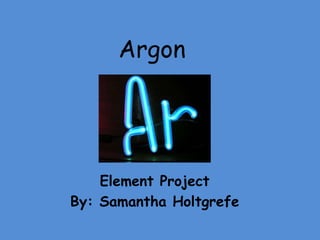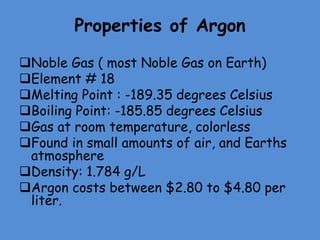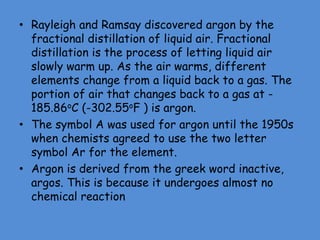Argon is a colorless, odorless noble gas that makes up 0.93% of the Earth's atmosphere. It was discovered in 1894 by Sir William Ramsay and Lord Rayleigh, who isolated it by fractional distillation of liquid air. Argon is used in light bulbs, lasers, welding, fire extinguishers, and to preserve museum artifacts due to its chemical inertness.






